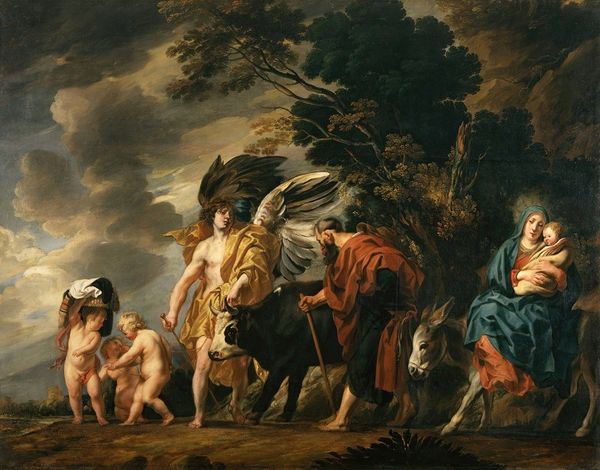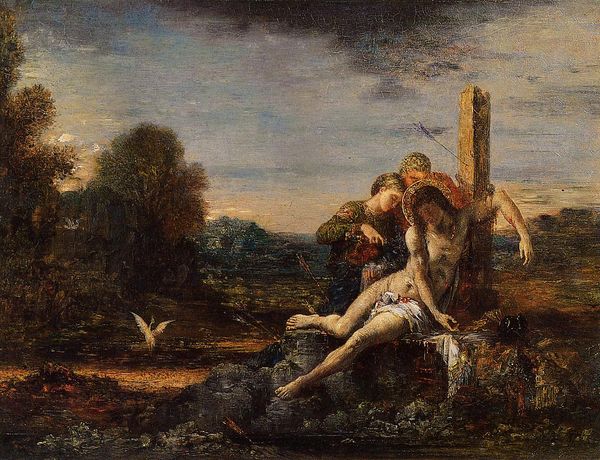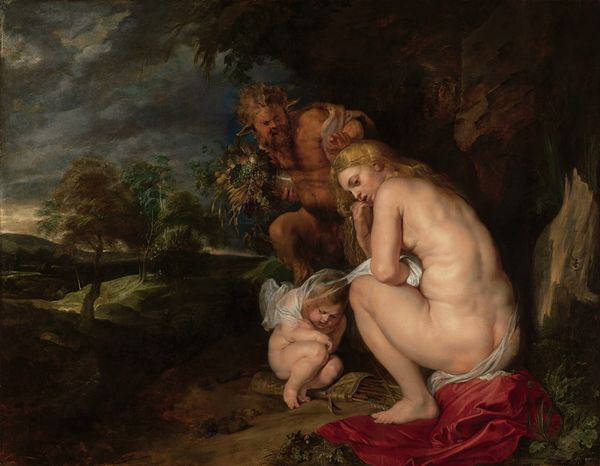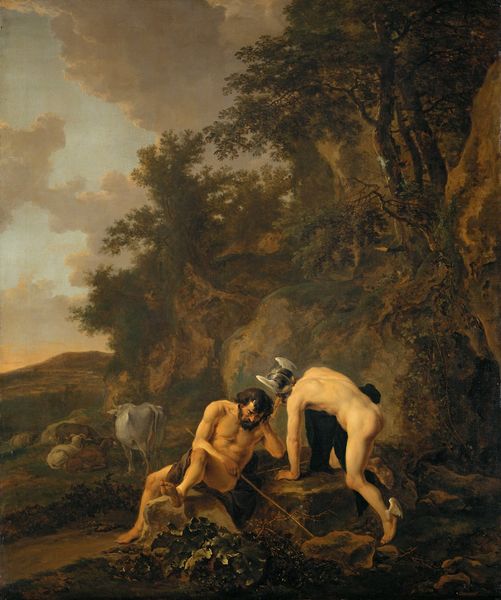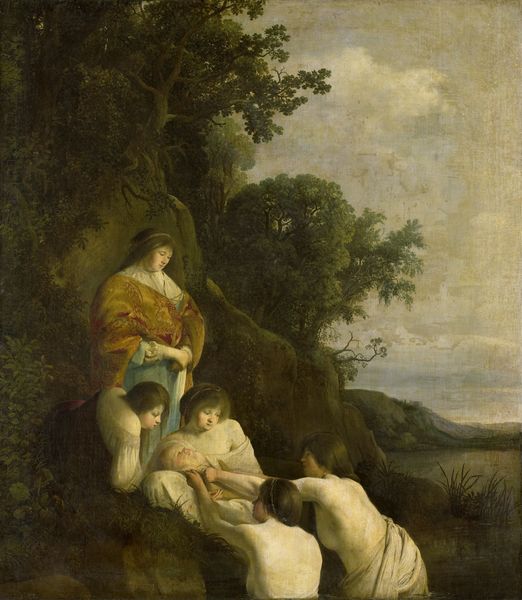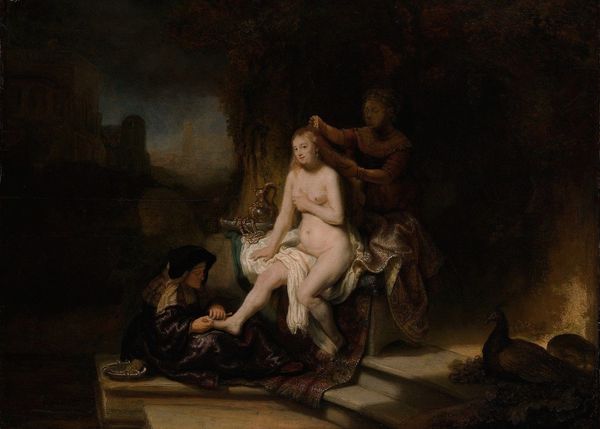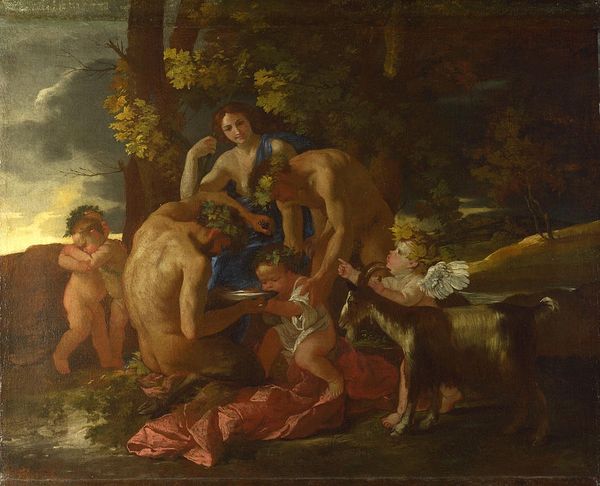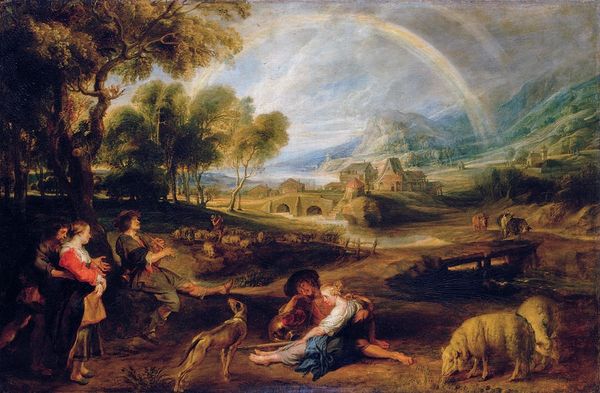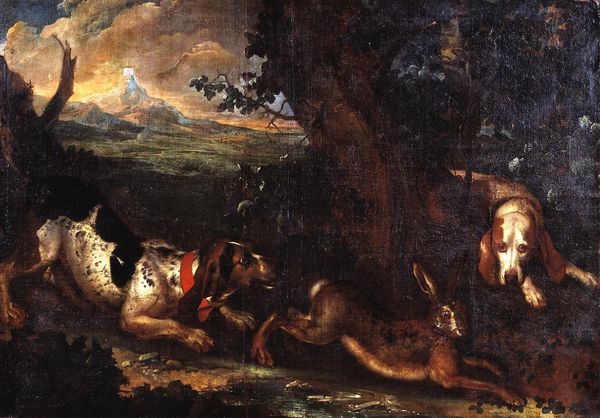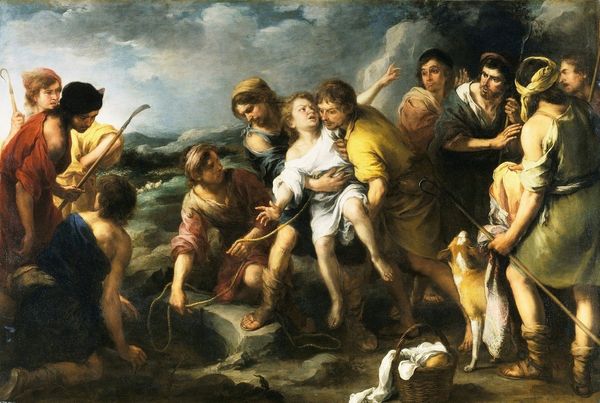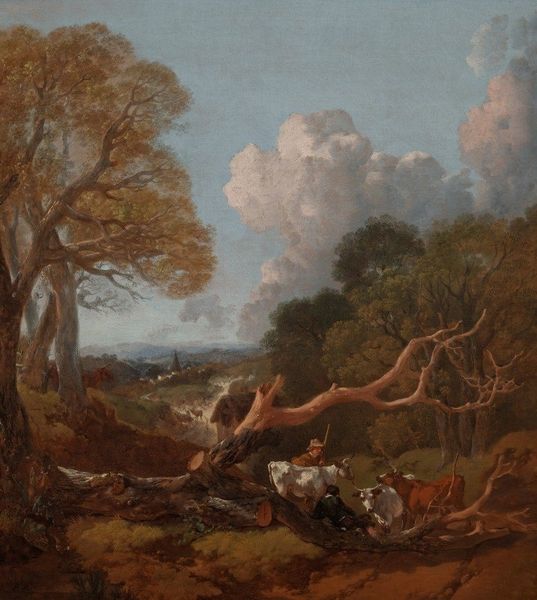
oil-paint
#
dutch-golden-age
#
oil-paint
#
landscape
#
oil painting
#
genre-painting
#
male-nude
Copyright: Public domain
Editor: This is "A Hunter Getting Dressed after Bathing" painted by Gabriel Metsu in 1656, using oil on canvas. I'm struck by how this genre scene blends everyday life with almost classical nudes. What underlying stories might the symbols be hinting at? Curator: Metsu masterfully intertwines the ruggedness of the hunt with a subtle vulnerability. Consider the juxtaposition of the hunter, vulnerable in his nakedness, juxtaposed with the tools of his trade; the gun, the hunting dog, and the dead game, the rabbit hanging overhead like a trophy. Doesn't it trigger contemplation about nature and human dominion? Editor: I do see what you mean about the interplay between hunter and hunted. The overall effect feels very carefully constructed, with all these subtle elements reinforcing one another. Are there more layers to this symbol system? Curator: The water could signify purification or cleansing after the hunt, connecting it to baptism and religious contexts. More universally, it symbolizes rebirth or transformation. What connections do you see with those themes given the other symbolic elements? Editor: I see! It could be a fresh start, after taking a life. And the windmill, further off—is that supposed to represent labor and civilization in contrast to wilderness? Curator: It might speak to societal structure but could more generally imply progress or industriousness – the turning of nature into utility. In any case, it anchors us in the artist's specific time. What would this piece have communicated to its original Dutch audience? Editor: Knowing these hidden signs helps us better appreciate the richness of Dutch Golden Age painting and it shows me how Metsu can weave together all of these little clues into something so meaningful. Curator: Yes! Discovering symbolic meanings is crucial for appreciating historical art’s depth, and also for understanding ourselves and our interpretations in light of the painting's many possible cultural implications.
Comments
No comments
Be the first to comment and join the conversation on the ultimate creative platform.
